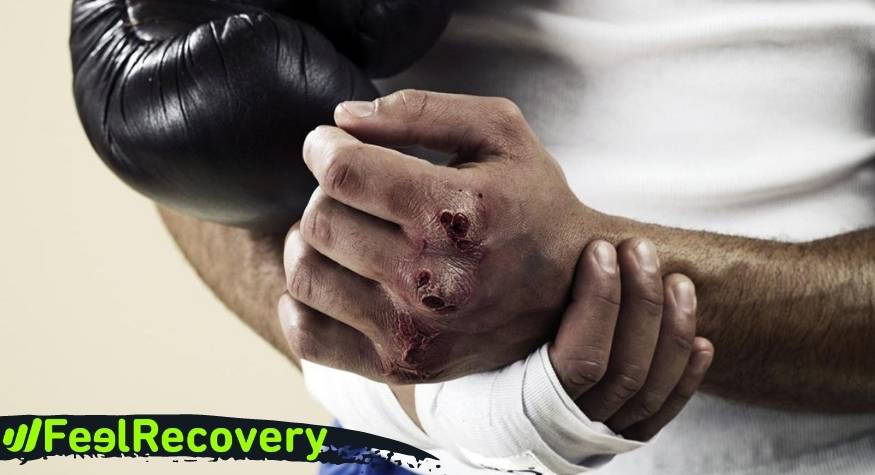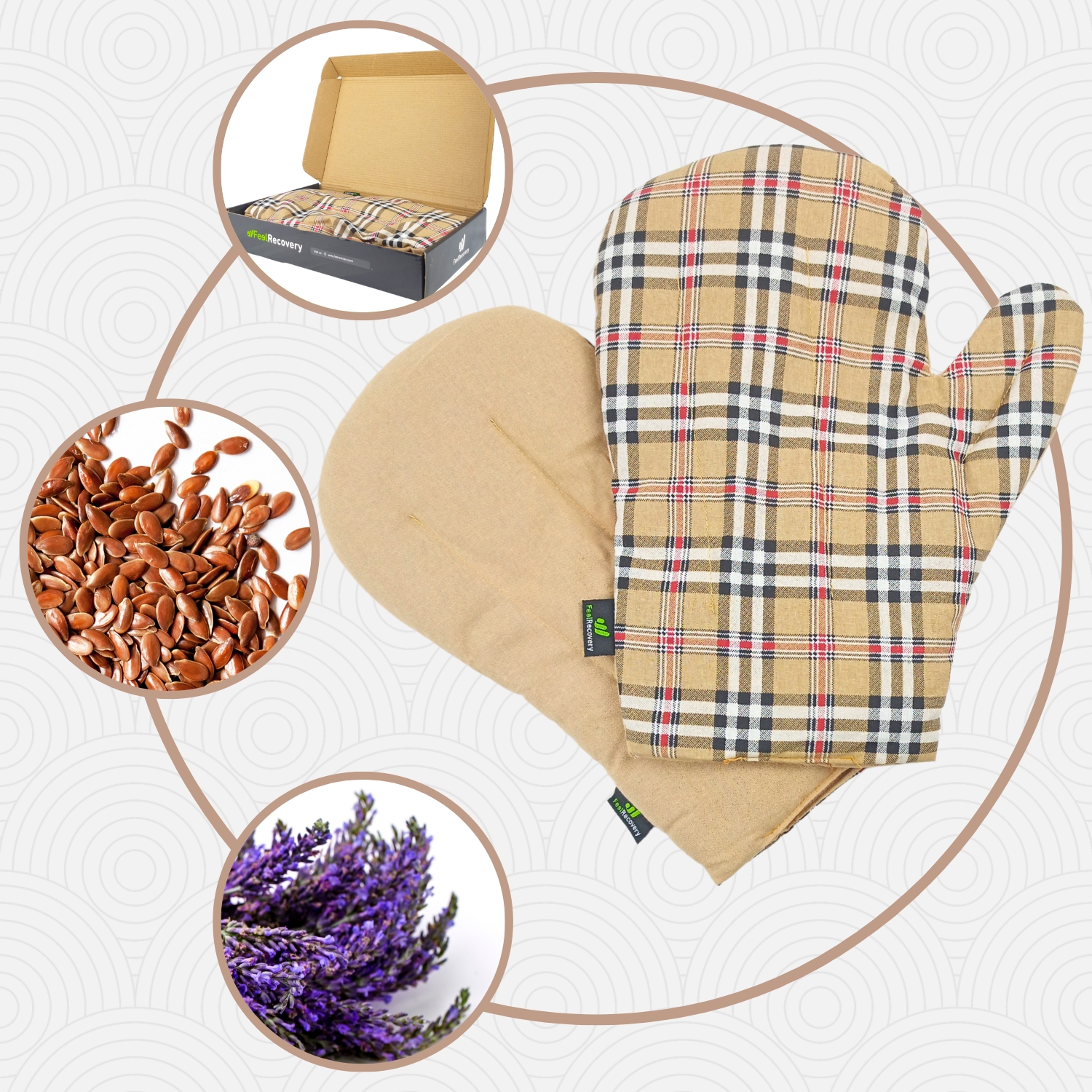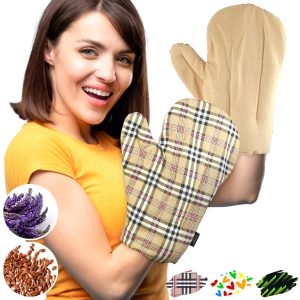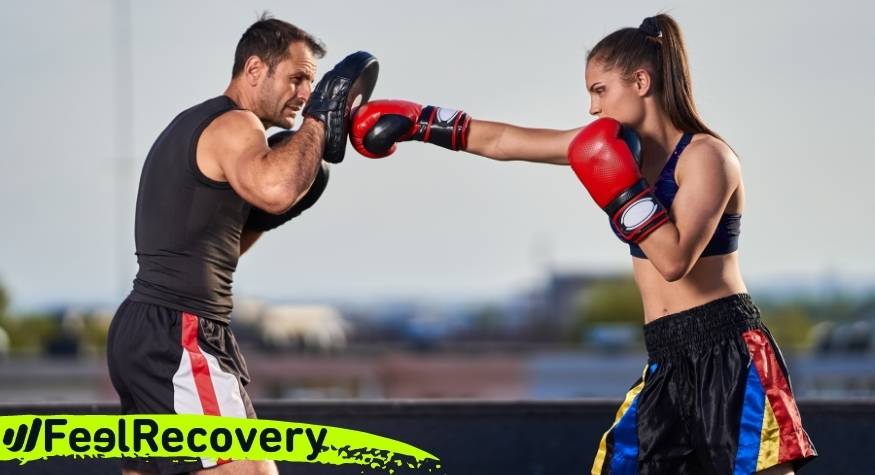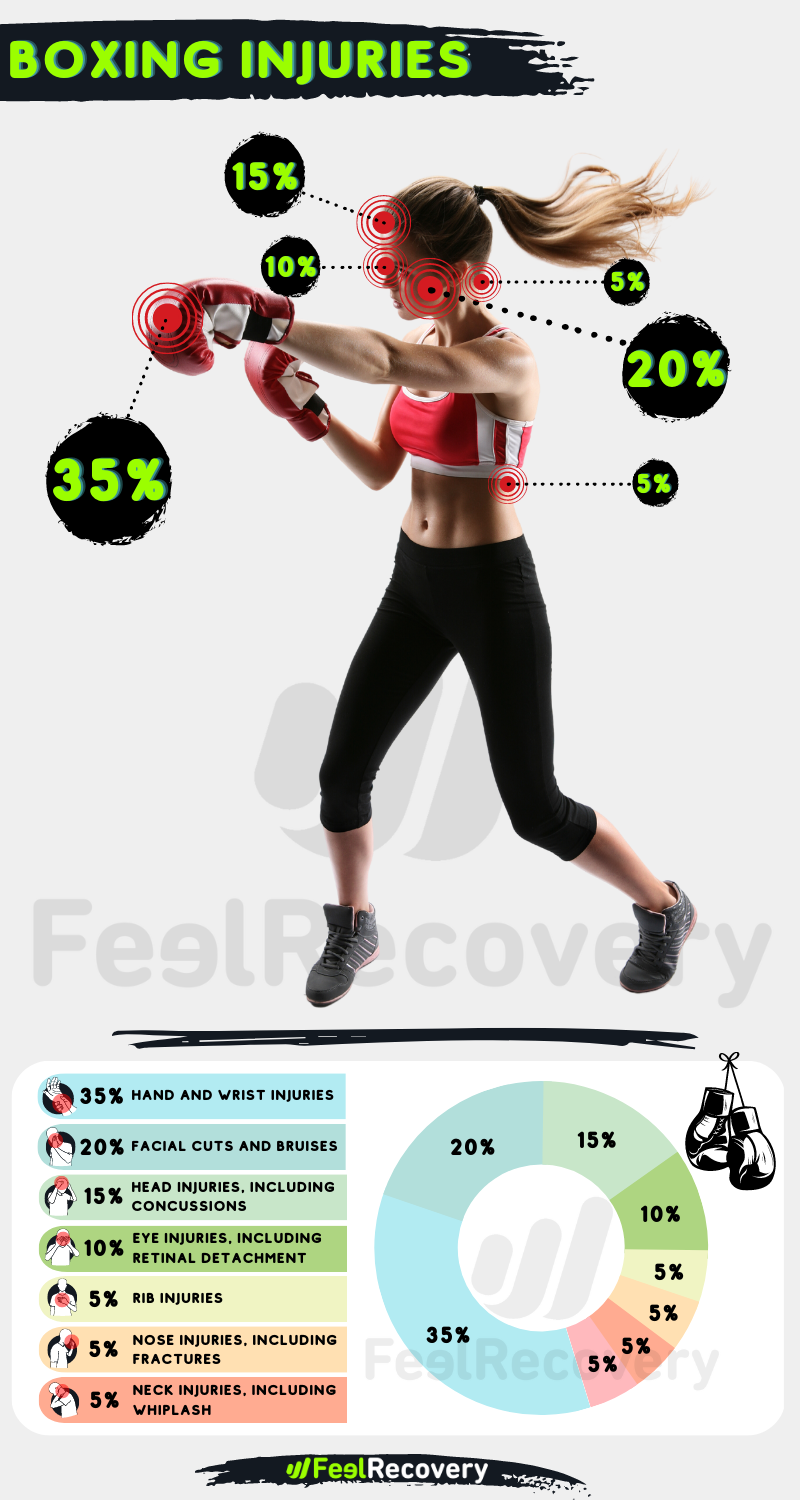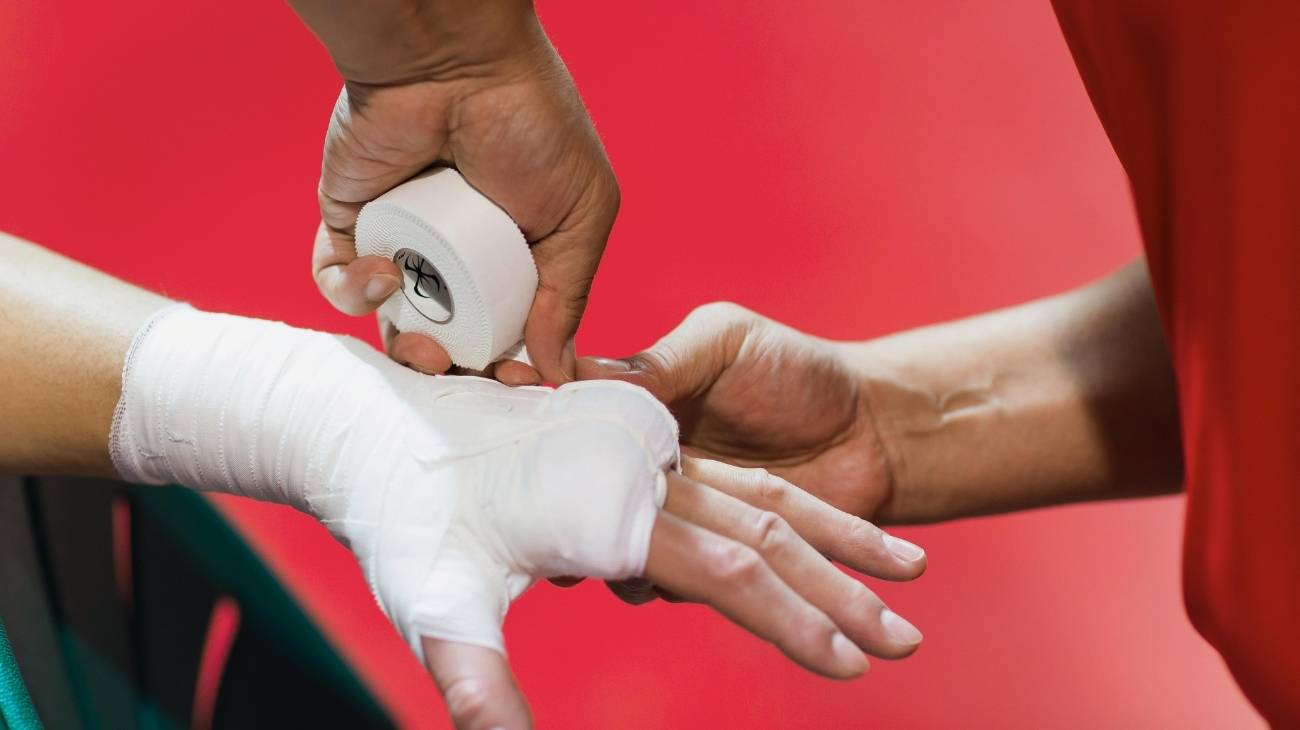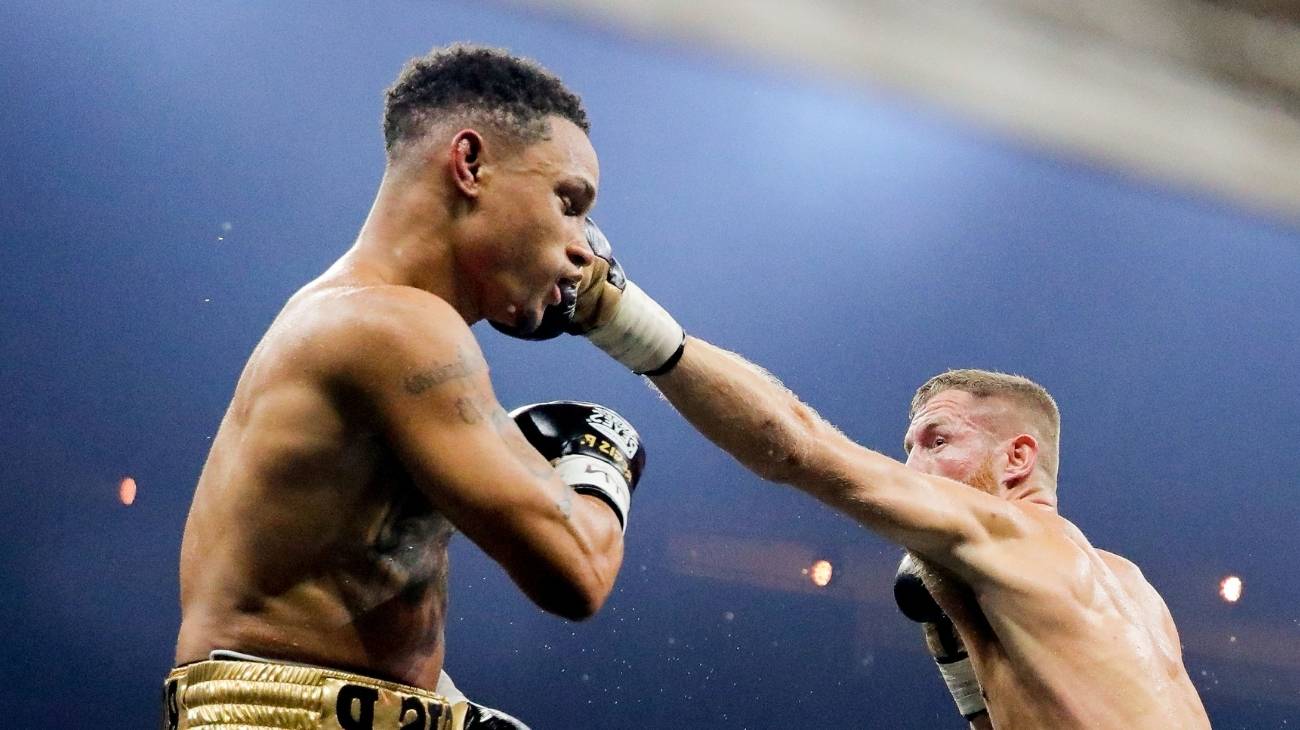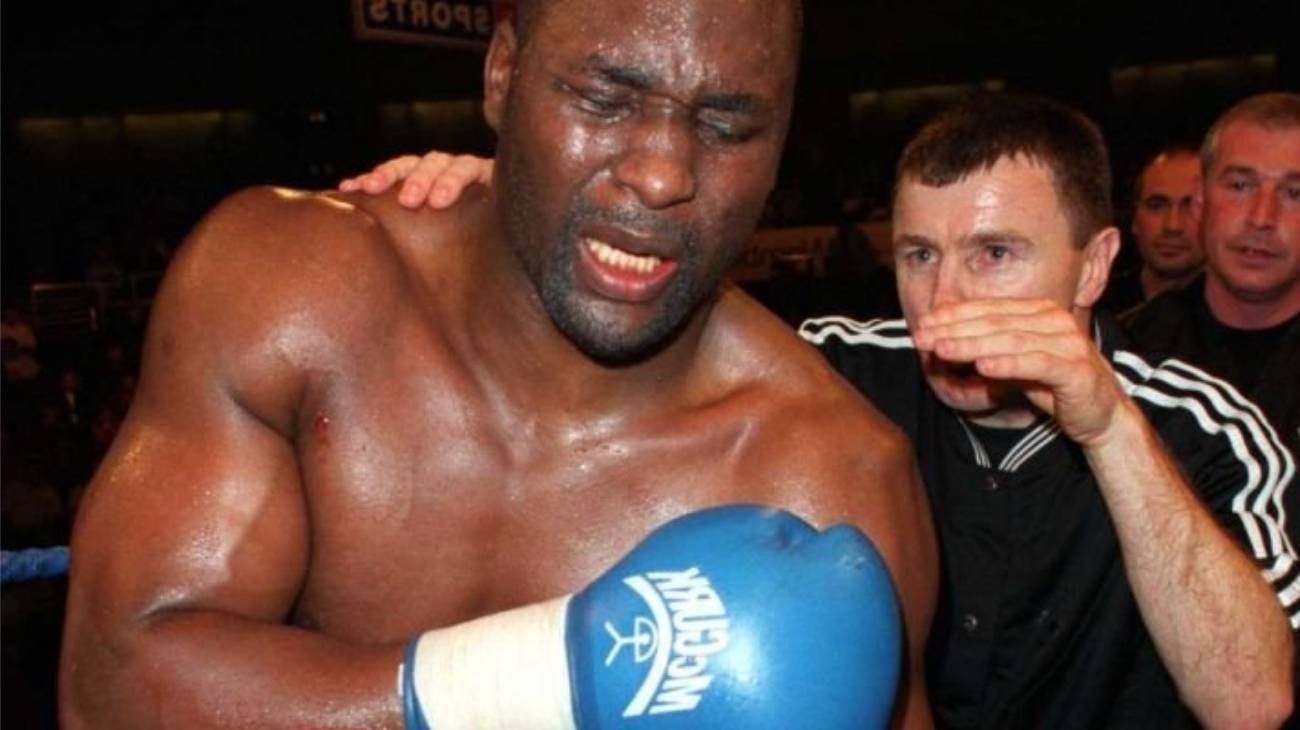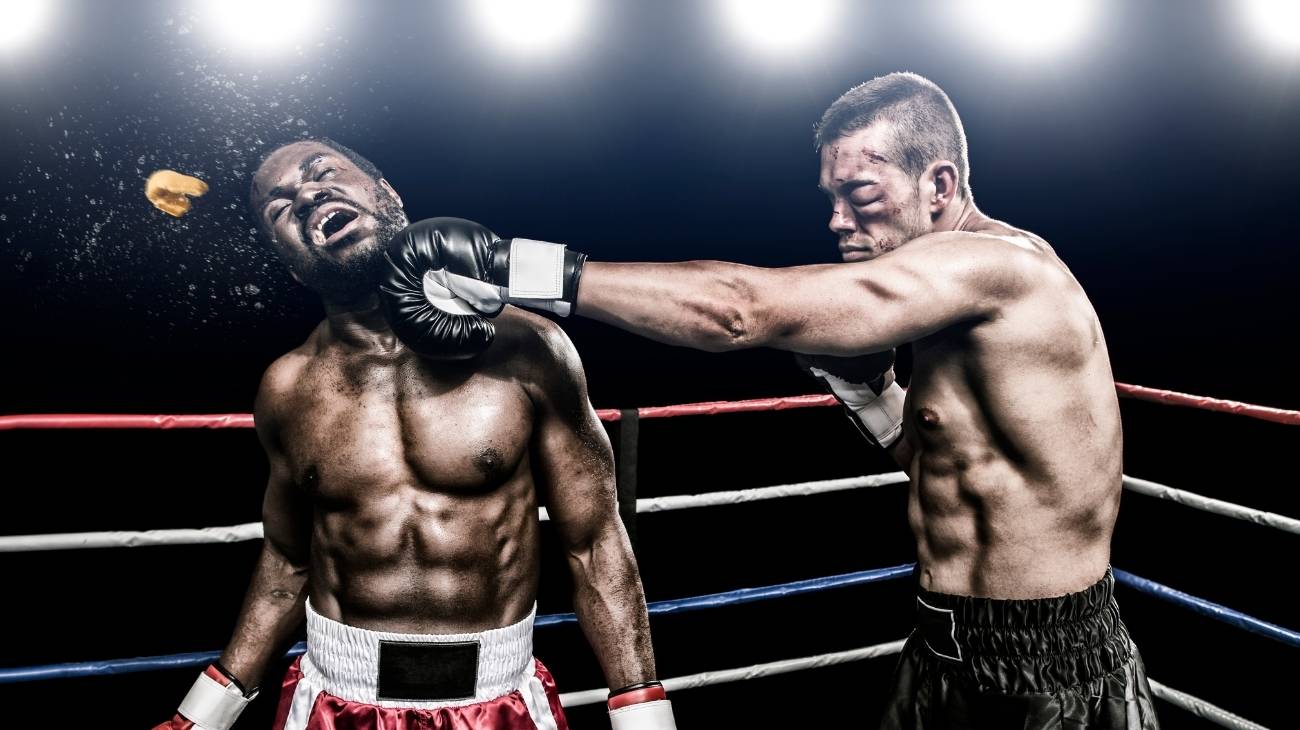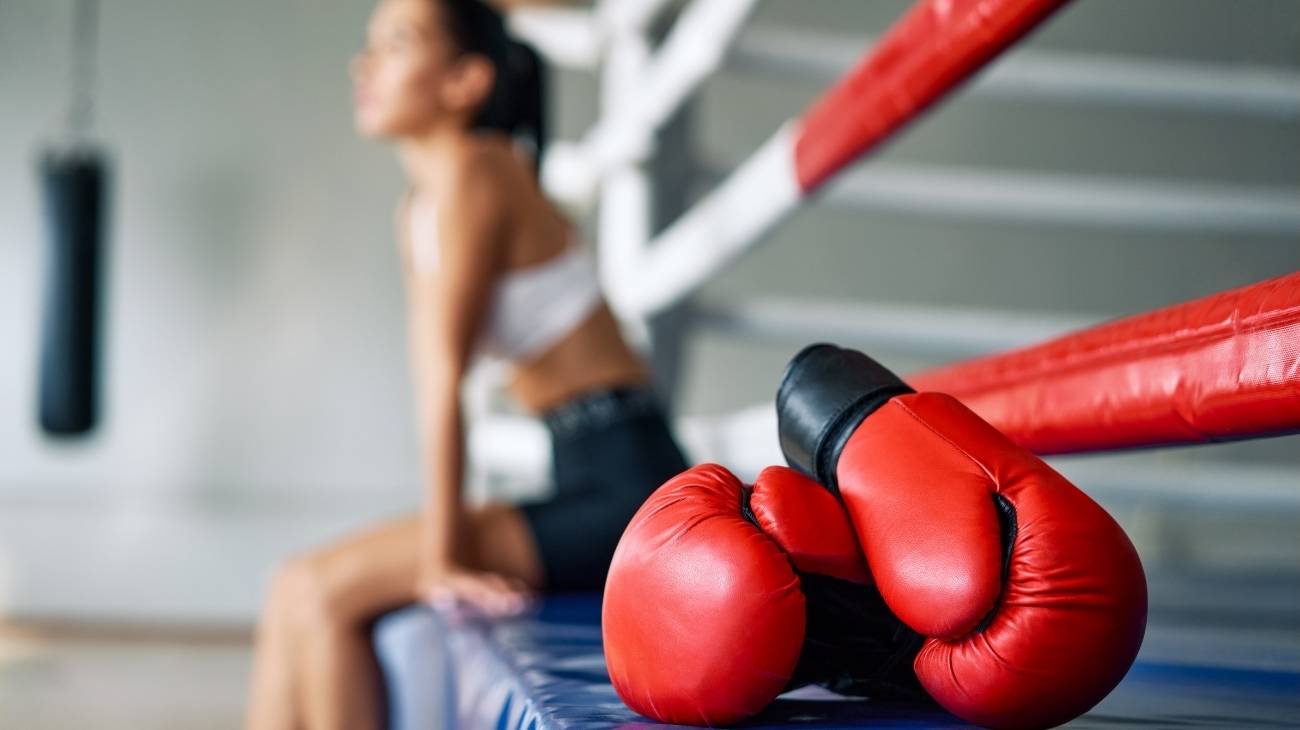Boxing is an intense sport with a lot of physical contact in which you have to know how to hit and avoid being hit by the other fighter. However, if you do not use the right technique for each movement, you run the risk of muscle injury.
In most sports, and more so in boxing, there is a high chance of injury during practice. In this article we will talk about the most common injuries and the most effective ways to prevent them in training and sparring.
What are the most common types of injuries in contact sports such as boxing?
Most of the injuries that boxers suffer are generated more frequently in combat than in training. The forcefulness of the blows and prolonged exposure to these concussions can cause injuries such as:
- Sprains: These occur when a joint is forced to perform an unnatural movement that stretches its ligaments too much. In boxing, they usually occur mainly in the neck as a result of blows received, or in the wrists due to the impact of the blows. The sprain has 3 degrees that vary according to the damage received by the ligaments, which can be partial or total.
- Dislocations: When a bone moves out of position a dislocation occurs which usually also damages the ligaments of the joint. In boxing the most common dislocations occur in the shoulder as a result of a heavy blow.
- Fractures: Cracks in the ribs are the most common fractures as the torso is one of the places boxers most look to hit as it is where almost all vital organs are located.
- Contusions: Undoubtedly the most common injury in this high impact sport as the simple act of hitting generates a contusion. This is usually focused and noticed more than anything else on the face, specifically on the eyebrows and cheekbones where most of the blows are received.
- Lacerations: As a consequence of constant contusions, blood accumulates in a point and when a final blow is received, it comes out breaking the skin. This type of injury is seen in almost all fights on the cheekbones and eyebrows which are the areas with the most delicate skin on the face.
Best products for boxing injury recovery
Bestseller
-
2 Ankle Compression Sleeve (Black/Gray)
$19.95 -
2 Ankle Compression Sleeve (Green/Navy)
$19.95 -
2 Ankle Compression Sleeve (Pink/Bordeaux)
$19.95 -
2 Knee Compression Sleeve (Black/Gray)
$19.95 -
2 Knee Compression Sleeve (Green/Navy)
$19.95 -
2 Knee Compression Sleeve (Pink/Bordeaux)
$19.95 -
2 Patella Knee Strap (Black/Gray)
$14.95 -
2 Patella Knee Strap (Green/Navy)
$14.95 -
2 Patella Knee Strap (Pink/Bordeaux)
$14.95 -
2 Thigh Compression Sleeve (Black/Gray)
$19.95 -
2 Thigh Compression Sleeve (Green/Navy)
$19.95 -
2 Thigh Compression Sleeve (Pink/Bordeaux)
$19.95 -
Acupressure Mat and Pillow (Black/Gray)
$49.95 -
Acupressure Mat and Pillow (Green/Navy)
$49.95 -
Acupressure Mat and Pillow (Pink/Bordeaux)
$49.95 -
Acupressure Pillow (Black/Gray)
$29.46 -
Acupressure Pillow (Green/Navy)
$29.46 -
Acupressure Pillow (Pink/Bordeaux)
$29.46 -
Back Support Belt (Black)
$34.95 -
Back Support Belt (Green)
$34.95 -
Back Support Belt (Pink)
$34.95 -
Foot Massage Roller for Plantar Fasciitis (Black)
$19.95 -
Foot Massage Roller for Plantar Fasciitis (Green)
$19.95 -
Foot Massage Roller for Plantar Fasciitis (Pink)
$19.95 -
Gel Eye Mask for Puffy Eyes (Gold/Black)
$11.95 -
Gel Eye Mask for Puffy Eyes (Orange/Pink)
$11.95 -
Gel Eye Mask for Puffy Eyes (Purple/Turquoise)
$11.95 -
High Density Foam Roller for Muscle (Black/Gray)
$29.95 -
High Density Foam Roller for Muscle (Green/Navy)
$29.95 -
High Density Foam Roller for Muscle (Pink/Bordeaux)
$29.95 -
Ice Massage Roller Ball (Black)
$39.95 -
Ice Massage Roller Ball (Green)
$39.95 -
Ice Massage Roller Ball (Pink)
$39.95 -
Microwave Arthritis Gloves (2 Mittens) (Hearts)
$29.95 -
Microwave Arthritis Gloves (2 Mittens) (Oxford)
$29.95 -
Microwave Heating Pad for Neck & Shoulder Pain Relief (Hearts)
$24.95 -
Microwave Heating Pad for Neck & Shoulder Pain Relief (Oxford)
$24.95 -
Microwave Heating Pad for Neck & Shoulder Pain Relief (Sport)
$24.95 -
Microwave Heating Pad for Neck Pain Relief (Hearts)
$19.95 -
Microwave Heating Pad for Neck Pain Relief (Oxford)
$19.95 -
Microwave Heating Pad for Neck Pain Relief (Sport)
$19.95 -
Pack 2 In 1 Foam Roller High + Soft Density (Black/Gray)
$29.95 -
Pack 2 In 1 Foam Roller High + Soft Density (Green/Navy)
$29.95 -
Pack 2 In 1 Foam Roller High + Soft Density (Pink/Bordeaux)
$29.95 -
Shoulder Support Brace (Black)
$24.95 -
Shoulder Support Brace (Green)
$24.95 -
Shoulder Support Brace (Pink)
$24.95 -
Soft Density Foam Roller for Recovery (Black)
$29.95 -
Soft Density Foam Roller for Recovery (Green)
$29.95 -
Soft Density Foam Roller for Recovery (Pink)
$29.95 -
Trigger Point Massage Stick (Black)
$14.95 -
Trigger Point Massage Stick (Green)
$14.95 -
Trigger Point Massage Stick (Pink)
$14.95 -
Wrist Brace (Black/Gray)
$19.95 -
Wrist Brace (Green/Navy)
$19.95 -
Wrist Brace (Pink/Bordeaux)
$19.95
List of boxing injury prevention methods
When practising this sport, whether competing or training, it is advisable to use, as far as possible, the basic protections such as mouth protection, helmet and bandages. Whatever is available to reduce the chances of injury.
Warm up properly
Before the start of the practice, it is advisable to spend some time stretching the different parts of the body so that the muscles warm up and support more comfortably the physical load that you will have to bear later.
In training, the classic warm-up is based on cardio sessions that progress from less to more. In the beginning, you usually start with a gentle jog for about 20 minutes or do stamina sessions to improve endurance by jumping rope and hitting the boxing bag.
Once this warm-up is done, a more demanding training session is carried out to prepare the body for the fight. Warming up is essential in boxing because otherwise you run the risk of suffering injuries in training sessions that are often as demanding as the fights themselves.
Finish training with a cool down
Ending the workout with a cool-down or cool-down will help the blood circulate normally through the body again, and will help to gradually return the heart and breathing to a normal rhythm. A cool-down activity can be a low-intensity version of the previously performed activity. In boxing, a warm-up is often performed in reverse, with low-intensity sessions of punching bags and pears, and ending with a stretching session to allow the muscles to gradually relax.
Good nutrition and hydration
The performance of athletes in this sport will depend a lot on nutrition, being very important in boxing to meet the weight goals without risking the integrity of the practitioner, that is, not to risk in any way the health of the athlete.
A boxer's diet should contain plenty of fats and proteins, so that heavy training sessions do not have a negative influence on the boxer's weight, without indulging in junk food that will increase his body fat. In addition, vitamins and minerals as well as essential fatty acids are non-negotiable, so eat plenty of lean meat, fruits and vegetables in meals spread throughout the day.
It is important to ensure that the athlete is well hydrated before, during and after training and/or competitions. Good hydration also translates into better performance and better muscular endurance, making them less prone to injury.
Improve your fitness
Whether your intentions are to go pro or simply trade hobby hits in the gym as a way to drain stress, it's essential to have a proper state of fitness. That' s why you must keep your body 100% trained before a fight, whether it's an exhibition or a competitive bout.
The core of the body and the legs are the most important part, much more so than the arms as they are used to execute the movement but the strength of the punch is actually in the back and lats. That's why you should always keep this part of your anatomy in good shape.
Sports massage
It is a type of massage that prepares the body for sporting exertion, it can also help prevent injuries as well as aid recovery after an injury sustained in training or competition. For this reason, sports massage is one of the most popular physiotherapeutic techniques among professional and amateur boxers.
Use of hot and cold therapies
A considerable part of the injuries of athletes are due to cold muscles. If the pre-workout warm-up is not done correctly, the muscles will remain tight and when the intensity is turned up, they are at risk of tearing. To help control the pain caused by this type of injury, it is highly recommended to apply heat to the area, as it has a sedative effect and helps to relax the muscles.
On the other hand, when a muscle injury occurs and the muscle becomes inflamed, applying cold helps to reduce the inflammation and helps to relieve the pain.
Use of compression garments
The use of compression garments has been around for many years and their benefits have long been proven by scientists around the world. Professional boxers as well as athletes in other disciplines use these garments to help reduce the lactic acid produced by the muscles so that they can train harder and for longer periods of time.
As athletes take their sport more and more seriously, the use of compression garments is becoming more and more common. Benefits include improving blood flow to the muscles.
Use of acupressure therapy
Acupressure therapy or acupressure massage belongs to ancient Chinese medicine and is widely used in sports to treat injuries and pain in specific areas of the body. Acupressure therapy is an alternative for athletes who prefer a more "natural" recovery, so to speak, than trying to relieve pain through the use of medication.
Use of thermotherapy and cryotherapy
Thermotherapy and cryotherapy, heat and cold therapies, respectively, are frequently used to treat sports injuries, are easy to do and have numerous advantages. Cryotherapy (cold) helps to reduce inflammation when the injury is fresh and also helps to relieve the pain caused by the injury. Thermotherapy, on the other hand, greatly aids muscle relaxation and aids muscle recovery.
Use of good equipment
As we already know, boxing is one of the most demanding sports that demands a lot of physical endurance and coordination of the limbs, so boxers of all levels have to work on maintaining and improving their physical condition and enhancing their attack, defence and movement.
Therefore, the use of appropriate equipment plays a very important role. The use of good quality equipment can help to further accelerate the athletes' level of development. Good gloves, shoes and even a good punching bag will allow any practitioner of the discipline to constantly improve while practising.
Among the most commonly used equipment are:
- Boxing gloves.
- Bandages.
- Boxing mitts.
- Boxing helmet.
- Boxing bag.
- Boxing bag.
References
- Zazryn, T. R., McCrory, P. R., & Cameron, P. A. (2008). Neurologic injuries in boxing and other combat sports. Neurologic clinics, 26(1), 257-270. https://www.sciencedirect.com/science/article/abs/pii/S0733861907001272
- Ross, R. J., Casson, I. R., Siegel, O., & Cole, M. (1987). Boxing injuries: neurologic, radiologic, and neuropsychologic evaluation. Clinics in sports medicine, 6(1), 41-51. https://www.sciencedirect.com/science/article/abs/pii/S0278591920310577
- Bledsoe, G. H., Li, G., & Levy, F. (2005). Injury risk in professional boxing. Southern medical journal, 98(10), 994-999. https://www.researchgate.net/profile/Guohua-Li-7/publication/7472412_Injury_Risk_in_Professional_Boxing/links/59a44bafa6fdcc773a373b70/Injury-Risk-in-Professional-Boxing.pdf
- Loosemore, M., Lightfoot, J., & Beardsley, C. (2015). Boxing injuries by anatomical location: a systematic review. Medicina Sportiva: Journal of Romanian Sports Medicine Society, 11(3), 2583. https://medicinasportiva.ro/SRoMS/RMS/43/boxing-injuries-anatomical-location-review.pdf
- Jordan, B. D. (1987). Neurologic aspects of boxing. Archives of neurology, 44(4), 453-459. https://jamanetwork.com/journals/jamaneurology/article-abstract/586343
- Loosemore, M., Lightfoot, J., Palmer-Green, D., Gatt, I., Bilzon, J., & Beardsley, C. (2015). Boxing injury epidemiology in the Great Britain team: a 5-year surveillance study of medically diagnosed injury incidence and outcome. British journal of sports medicine, 49(17), 1100-1107. https://bjsm.bmj.com/content/49/17/1100.short
- Gartland, S., Malik, M. H. A., & Lovell, M. E. (2001). Injury and injury rates in Muay Thai kick boxing. British journal of sports medicine, 35(5), 308-313. https://bjsm.bmj.com/content/35/5/308.abstract
- Gissane, C., White, J., Kerr, K., & Jennings, D. (2001). An operational model to investigate contact sports injuries. Medicine and Science in Sports and Exercise, 33(12), 1999-2003. https://europepmc.org/article/med/11740290
- Tjønndal, A., Haudenhuyse, R., de Geus, B., & Buyse, L. (2022). Concussions, cuts and cracked bones: a systematic literature review on protective headgear and head injury prevention in Olympic boxing. European journal of sport science, 22(3), 447-459. https://www.tandfonline.com/doi/full/10.1080/17461391.2021.1872711
- Jayarao, M., Chin, L. S., & Cantu, R. C. (2010). Boxing-related head injuries. The Physician and Sportsmedicine, 38(3), 18-26. https://www.tandfonline.com/doi/abs/10.3810/psm.2010.10.1804

